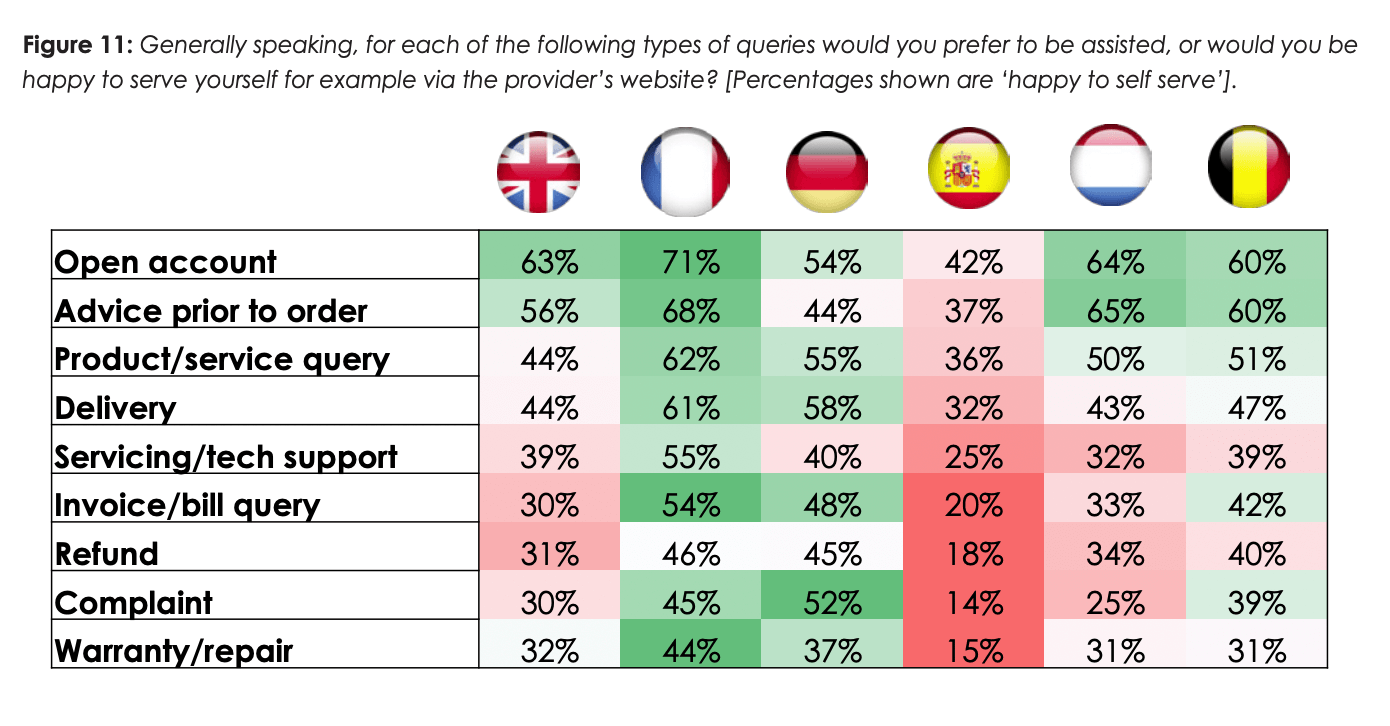Evolving Customer Service in Europe: Insights from the Voice of the European Contact Centre Consumer



What do European consumers think about customer service today, and how are their expectations and behaviors evolving?
In an era where customer service is not just a department but a vital aspect of every business, understanding consumer preferences and perceptions is paramount. Fortunately, we have a unique opportunity to dive deep into the minds of European consumers and unearth valuable insights.
Welcome to the first-ever "Voice of the European Contact Centre Consumer" research conducted by the European Contact Centre & Customer Service Exchange (ECCCSE), supported by Odigo.
Join us as we explore the shifting landscape of customer service across Belgium, France, Germany, the Netherlands, Spain, and the UK, and discover how these insights can fuel your customer experience (CX) strategies to new heights.
In today's ever-changing economic landscape, understanding consumer sentiment is crucial for businesses. The "Voice of the European Contact Centre Consumer" research sheds light on the prevailing concerns among European consumers, which are increasingly focused on their financial future. The study indicates that a significant portion of respondents, with 51% in France and 47% in Germany, express skepticism about what lies ahead. These numbers are notably higher compared to 37% in the Netherlands.
The underlying cause for this growing skepticism is the noticeable increase in the cost of living experienced across Europe. A considerable number of individuals in all six markets surveyed report that managing their finances has become more challenging. The highest figures are observed in France, where 63% of respondents feel the strain, followed by the UK at 53%. Interestingly, this financial strain appears to correlate with a more negative perception of customer service. In France, for instance, 30% of consumers believe that the quality of customer service has deteriorated over the past year, while only 19% think it has improved.
Consumer attitudes towards customer service are not uniform, and age plays a significant role in shaping these perspectives. Younger individuals, particularly those in their twenties, are more likely to have positive views regarding customer service improvements. For example, 39% of 18-24-year-olds, often considered early adopters of new technologies, believe that customer service has gotten better in the past year. In contrast, only 13% of those aged 55-64 share this sentiment, indicating a clear generational divide.
Moreover, the willingness to embrace new technologies also has a direct impact on consumer responses. Among European respondents who are open to adopting new tech solutions, 28% believe that customer service quality has improved, while just 13% of those less inclined to adopt new technology share this view. This underscores the critical role that technology plays in shaping customer service experiences and highlights the need for businesses to stay ahead in the digital transformation curve to meet evolving customer expectations.
In the age of digital transformation, technology is a game-changer in the world of customer service. Consumers across Europe recognize the significant value added by technology in enhancing their overall customer service experience. They commend the support provided by advisors but underscore the essential role technology plays in these interactions. This recognition of technology's value is reflected in the increasing adoption of self-service options, demonstrating that consumers are progressing towards greater autonomy.
France emerges as a leader in this trend, with a strong willingness to adopt self-service options. This includes tasks like account opening (71%), seeking pre-purchase advice (68%), inquiring about products or services (62%), and utilizing delivery services (61%). However, an intriguing shift occurs when dealing with more complex, emotional, urgent, and post-purchase interactions. In such cases, the preference clearly tilts toward human assistance. This evolving customer behavior highlights a significant opportunity for businesses to harness technology effectively to enhance customer interactions, provided they understand the nuanced expectations based on the type of request, the buying cycle, digital adoption maturity, and regional specificities. These insights shed light on the multifaceted nature of evolving customer service perceptions and underline the importance of adapting strategies to cater to the diverse needs and preferences of consumers across Europe.

Consumer acceptance of self-service options across the six markets covered in this research is closely tied to the nature of the interaction. It is clear that there is a higher level of acceptance for simpler interactions, such as opening an account or seeking basic product information, where self-service solutions are preferred. However, this acceptance diminishes significantly when dealing with more complex, emotional, or urgent issues like repairs or complaints, where human assistance becomes crucial.
The distinction between a 'query' and a 'problem' is a vital consideration for organizations crafting their channel strategies. While consumers may be open to initiating their journey through self-service, especially for complex post-purchase queries, it is imperative to provide an effortless option to transition to a human advisor when needed. In this context, the integration of live video support can play a pivotal role in resolving intricate issues that surpass the capabilities of self-service solutions, ensuring a seamless and effective customer support experience.
The research indicates that consumer perceptions of customer service can vary greatly depending on the industry they interact with. Understanding these industry-specific nuances is pivotal for businesses aiming to improve their customer service strategies. Moreover, the study highlights that the impact of broader global factors is shaping customer service expectations and experiences, with implications for both local and international businesses.
This section delves into the varying degrees of customer service quality across different industries and countries, shedding light on the critical need for businesses to address sector-specific challenges and bridge the gap between customer expectations and reality in an ever-evolving global landscape.
These key insights provide a snapshot of the nuanced landscape of customer service perceptions across Europe, emphasizing the importance of understanding regional and demographic differences for businesses striving to enhance their customer service strategies.
In conclusion, the "Voice of the European Contact Centre Consumer" research provides valuable insights into the evolving landscape of customer service across Europe. It's evident that consumer expectations and perceptions are inextricably linked to economic factors, age demographics, industry dynamics, and the nature of the interaction.
To take a deep dive into the report visit :
To learn more about humanizing customer service interactions with video, get a demo today!
Explore the top customer service trends for 2026—a quick look at what’s shaping customer expectations and behaviors in the year ahead.
Customer service: trends not to miss in 2026
8 Dec 2025
Here is the list of best Call Center Conferences to attend in 2026. Check out the top events, summits and meetups globally that you can plan for this year.
List of Best Call Center Conferences to Attend in 2026
1 Dec 2025
Best Customer Experience Conferences to Attend in 2026
1 Dec 2025
Interested in our solutions?